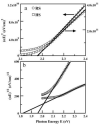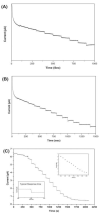Iron Oxide Nanoparticles: A Review on the Province of Its Compounds, Properties and Biological Applications
- PMID: 36614400
- PMCID: PMC9820855
- DOI: 10.3390/ma16010059
Iron Oxide Nanoparticles: A Review on the Province of Its Compounds, Properties and Biological Applications
Abstract
Materials science and technology, with the advent of nanotechnology, has brought about innumerable nanomaterials and multi-functional materials, with intriguing yet profound properties, into the scientific realm. Even a minor functionalization of a nanomaterial brings about vast changes in its properties that could be potentially utilized in various applications, particularly for biological applications, as one of the primary needs at present is for point-of-care devices that can provide swifter, accurate, reliable, and reproducible results for the detection of various physiological conditions, or as elements that could increase the resolution of current bio-imaging procedures. In this regard, iron oxide nanoparticles, a major class of metal oxide nanoparticles, have been sweepingly synthesized, characterized, and studied for their essential properties; there are 14 polymorphs that have been reported so far in the literature. With such a background, this review's primary focus is the discussion of the different synthesis methods along with their structural, optical, magnetic, rheological and phase transformation properties. Subsequently, the review has been extrapolated to summarize the effective use of these nanoparticles as contrast agents in bio-imaging, therapeutic agents making use of its immune-toxicity and subsequent usage in hyperthermia for the treatment of cancer, electron transfer agents in copious electrochemical based enzymatic or non-enzymatic biosensors and bactericidal coatings over biomaterials to reduce the biofilm formation significantly.
Keywords: bio-imaging; biomaterials; electrochemical biosensors; iron oxide polymorphs; nanoparticles; properties.
Conflict of interest statement
The authors declare no conflict of interest.
Figures
















Similar articles
-
Biomedical Applications of Iron Oxide Nanoparticles: Current Insights Progress and Perspectives.Pharmaceutics. 2022 Jan 16;14(1):204. doi: 10.3390/pharmaceutics14010204. Pharmaceutics. 2022. PMID: 35057099 Free PMC article. Review.
-
Iron oxide nanoparticles coated with bioactive materials: a viable theragnostic strategy to improve osteosarcoma treatment.Discov Nano. 2025 Jan 30;20(1):18. doi: 10.1186/s11671-024-04163-w. Discov Nano. 2025. PMID: 39883285 Free PMC article. Review.
-
Gold, Silver and Iron Oxide Nanoparticles: Synthesis and Bionanoconjugation Strategies Aimed at Electrochemical Applications.Top Curr Chem (Cham). 2020 Jan 7;378(1):12. doi: 10.1007/s41061-019-0275-y. Top Curr Chem (Cham). 2020. PMID: 31907672 Review.
-
New Perspectives on Biomedical Applications of Iron Oxide Nanoparticles.Curr Med Chem. 2018 Feb 12;25(4):540-555. doi: 10.2174/0929867324666170616102922. Curr Med Chem. 2018. PMID: 28618993 Review.
-
Photo-fluorescent and magnetic properties of iron oxide nanoparticles for biomedical applications.Nanoscale. 2015 May 14;7(18):8209-32. doi: 10.1039/c5nr01538c. Nanoscale. 2015. PMID: 25899408 Review.
Cited by
-
Green-Synthesized Characterization, Antioxidant and Antibacterial Applications of CtAC/MNPs-Ag Nanocomposites.Pharmaceuticals (Basel). 2024 Jun 13;17(6):772. doi: 10.3390/ph17060772. Pharmaceuticals (Basel). 2024. PMID: 38931439 Free PMC article.
-
Enhanced reduction of COD in water associated with natural gas production using iron-based nanoparticles.RSC Adv. 2024 Apr 10;14(17):11633-11642. doi: 10.1039/d4ra00888j. eCollection 2024 Apr 10. RSC Adv. 2024. PMID: 38605901 Free PMC article.
-
Nano-Radiopharmaceuticals in Colon Cancer: Current Applications, Challenges, and Future Directions.Pharmaceuticals (Basel). 2025 Feb 14;18(2):257. doi: 10.3390/ph18020257. Pharmaceuticals (Basel). 2025. PMID: 40006069 Free PMC article. Review.
-
Electrical Capacitors Based on Silicone Oil and Iron Oxide Microfibers: Effects of the Magnetic Field on the Electrical Susceptance and Conductance.Micromachines (Basel). 2024 Jul 25;15(8):953. doi: 10.3390/mi15080953. Micromachines (Basel). 2024. PMID: 39203604 Free PMC article.
-
Iron oxide/silver-doped iron oxide nanoparticles: facile synthesis, characterization, antibacterial activity, genotoxicity and anticancer evaluation.Sci Rep. 2025 Aug 12;15(1):29593. doi: 10.1038/s41598-025-14098-6. Sci Rep. 2025. PMID: 40796792 Free PMC article.
References
-
- Dhak P., Kim M.-K., Lee J.H., Kim M., Kim S.-K. Linear-chain assemblies of iron oxide nanoparticles. J. Magn. Magn. Mater. 2017;433:47–52. doi: 10.1016/j.jmmm.2017.02.050. - DOI
-
- Cornell R.M., Schwertmann U. The Iron Oxides: Structure, Properties, Reactions, Occurences and Uses. 2nd ed. VCH; Weinheim, Germany: 2003.
Publication types
Grants and funding
LinkOut - more resources
Full Text Sources

